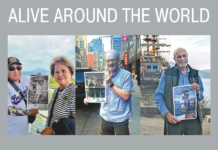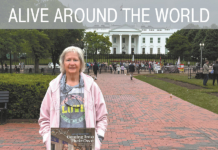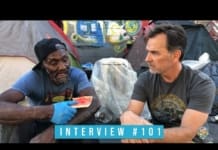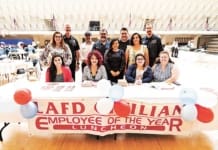 Send in your ALIVE! AROUND THE WORLD
Send in your ALIVE! AROUND THE WORLD
Take Alive! with you wherever you go! Bring your recent copy of Alive! with you when you travel and snap a high resolution photo of you holding Alive!
Send in your pictures and descriptive text using the online form, and we’ll publish it.
SUBMIT YOUR ALIVE! AROUND THE WORLD
![]()
Madeira Island, Portugal

“We’re standing on the Cabo Girao Skywalk that overlooks the city of Funchal and its beautifully terraced farms. A part of the platform is a transparent skywalk that looks directly down 2,000 feet onto the eastern Atlantic Ocean.” – Fred Ige, Planning
Peru

“At one of the floating Islands of Uros, in Lake Titicaca, Peru. Each island is built of totora, an aquatic plant that grows on the surface of Lake Titicaca. The totora is woven and laid on another layer of it to build the surface of each island. Lake Titicaca is the highest navigable lake in the world.” – Norman Faner, Retired, LADWP and Florian Faner, Retired, General Services
Maine

“I traveled to Bangor, Maine, and took a picture with the Paul Bunyan statue and in front of the Bar Harbor.” – Sophia Ponce de Leon, Retired, LAPD
Letter From Italy, Pt. 4
The Heel of Italy in Winter
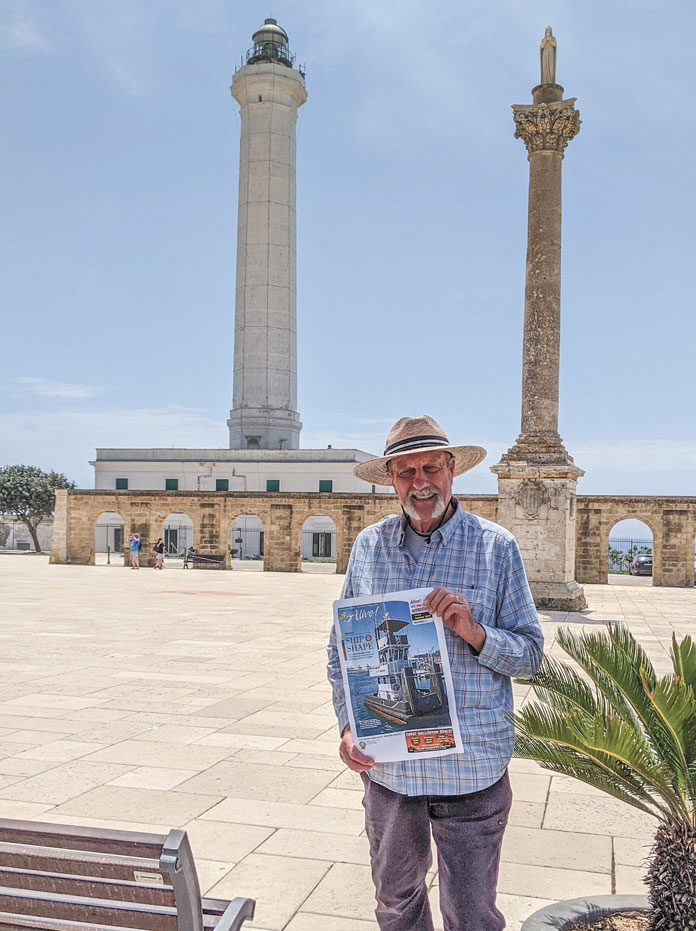
The weather from late September to early October is one of the best times to visit Puglia in the Heel of Italy; the children are back at school; the northern European sun-seeking tourists have returned home brown and happy; the forest floors are littered with porcini and truffles, and the extra-virgin olive oil is fresh off the press. Balmy temperatures tempt you to take a dip in the aqua-blue Ionian or Adriatic Seas. What better time could there be?
We took advantage of this tourist-free time and rented a large villa with some friends in Martano, some 43 miles south of Brindisi, a popular ferry port to Greece. From our base in Martano, we made numerous day trips to local fishing ports, whitewashed hilltop villages that dazzle in the midday sun, and thousands-of-years-old historical sights. Here are just a few highlights of our three-week adventures.
Puglia is surrounded by water on three sides, and for centuries, this part of Italy has been colonized, firstly by the Greeks, then followed by the ancient Romans, Byzantines, Normans and the Spanish, before becoming part of the Kingdom of the Two Sicilies, and finally the unified Kingdom of Italy. All left behind numerous old hilltop fortresses (most in ruins) and coastal towns with watchtowers erected during the 16th century to protect the Puglia coast from constant invasions.

The town of Lecce, nicknamed “The Florence of the South,” is built from a type of limestone called Lecce stone, which is very soft and perfect for carving sculptures. Walking around the narrow streets, it seems that there is a 17th-century Baroque building displaying ornate pillars and extravagantly carved exteriors on every corner. There is also a Roman amphitheatre (currently under repair) and the Basilica di Santa Croce with the usual saints and collection boxes.
Otranto (by the sea) is an interesting village on the Adriatic Sea, opposite Albania, featuring a 15th-century Aragonese castle and the 11th-century Skull Cathedral, whose large medieval mosaic floor depicting the tree of life is covered with a menagerie of bizarre images. The altar is rather morbid and disturbing, having been made from the human skulls and bones of 813 martyrs who died rather than convert to Islam. The bell tower clock struck at noon, perfect for Halloween, and the cathedral then closed until 3 p.m. We headed south to Porto Miggiano for lunch and a brief visit to the Torre di Porto Miggiano (the Tower of Port Miggiano).
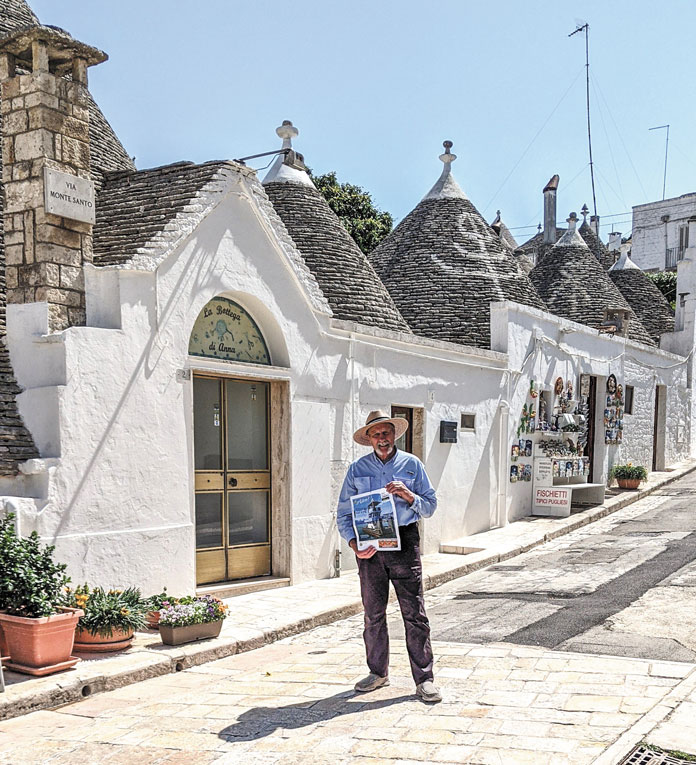
Alberobello is among the most famous of the region’s attractions and is located in central Puglia, in the verdant Itria valley. This landlocked village is renowned for its 1,500 conical-roofed stone Trulli huts. If you are a fan of the English author J.R.R. Tolkien, this is a must-see for these cylindrical whitewashed homes with cone-shaped roofs, built from large limestone slabs and made without mortar; they have been around locally for centuries. They are called Trulli (pronounced “truly”) and are very cute, just like little Hobbit houses. Many have symbols painted on their roofs that add to the mystical appearance of these tiny dwellings. Various designs include a sun, moon, love hearts and other pagan-like symbols. It is believed that some of these were of religious significance, while others had an astrological meaning.
Ostuni, “La Citta Bianca” (“The White City”) is another hilltop town inhabited since the Stone Age. Only a few villages survived the plague, which devastated Europe in the 17th century, and Ostuni was one of them. In the past, the local inhabitants painted the whole town with whitewash, hoping the reflection would dazzle their enemies and give them an advantage in battle. They did not know that the white lime had antibacterial properties that killed the fleas carrying the plague on the infected rats.
The town is on a steep hill, with many ups, downs and narrow streets, so we hired a tuk-tuk from the car park and saved our legs the walk. What an experience! The 30-minute tour was like Mr. Toad’s Wild Ride, driven by an Indy 500 driver in training. We zigged and zagged up the very narrow streets with their bright-colored doors and colorful flowers, narrowly missing diners eating at outdoor tables and seniors struggling with the climb, but the views from the top were amazing.

With cool breezes blowing off the Ionian Sea and the scent of wildflowers in the air, we decided to check out the region’s local food and wines. This same breeze creates a moderate temperature for local vineyards, which produce exceptionally full-bodied red wines like Negroamaro, Bombino Nero and Primitivo (Primitivo is Zinfandel and is originally from Croatia, where it was first called Tribidrag or Crljenak Kašteljanski, making for a delicious wine to drink on a hot day). My favorite regional pasta dish is spaghetti con le vongole. The pasta is tossed with tiny, delicious clams found in the local bay called vongole veraci (small clams). But there is also lamb and pea stew, orecchiette pasta with turnip greens, and macaroni with truffle. This temperate climate also produces superior white wine from rarely seen Verdeca grapes; its subtle and fruity taste brings to mind the phrase “wine is bottled sunshine,” and a chilled glass of this straw-green wine complemented my clam and pasta dish.
The food and wine in this little visited part of Italy is superb, and the local restaurant’s house wine was never a disappointment; we tasted many and were always satisfied.
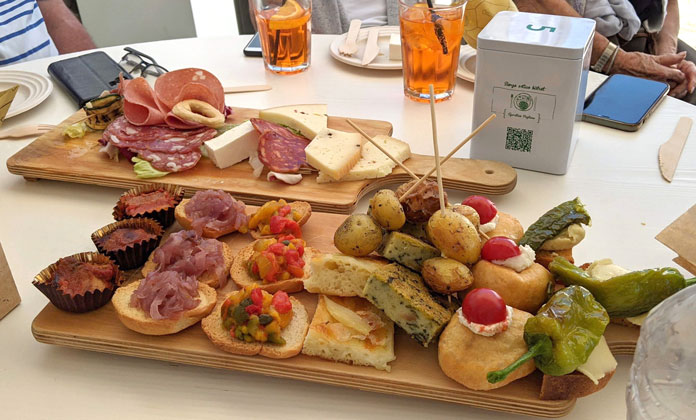
Visit this lovely part of Italy before the tour groups find it and it’s gone forever.
Ciao.
El Capitano





